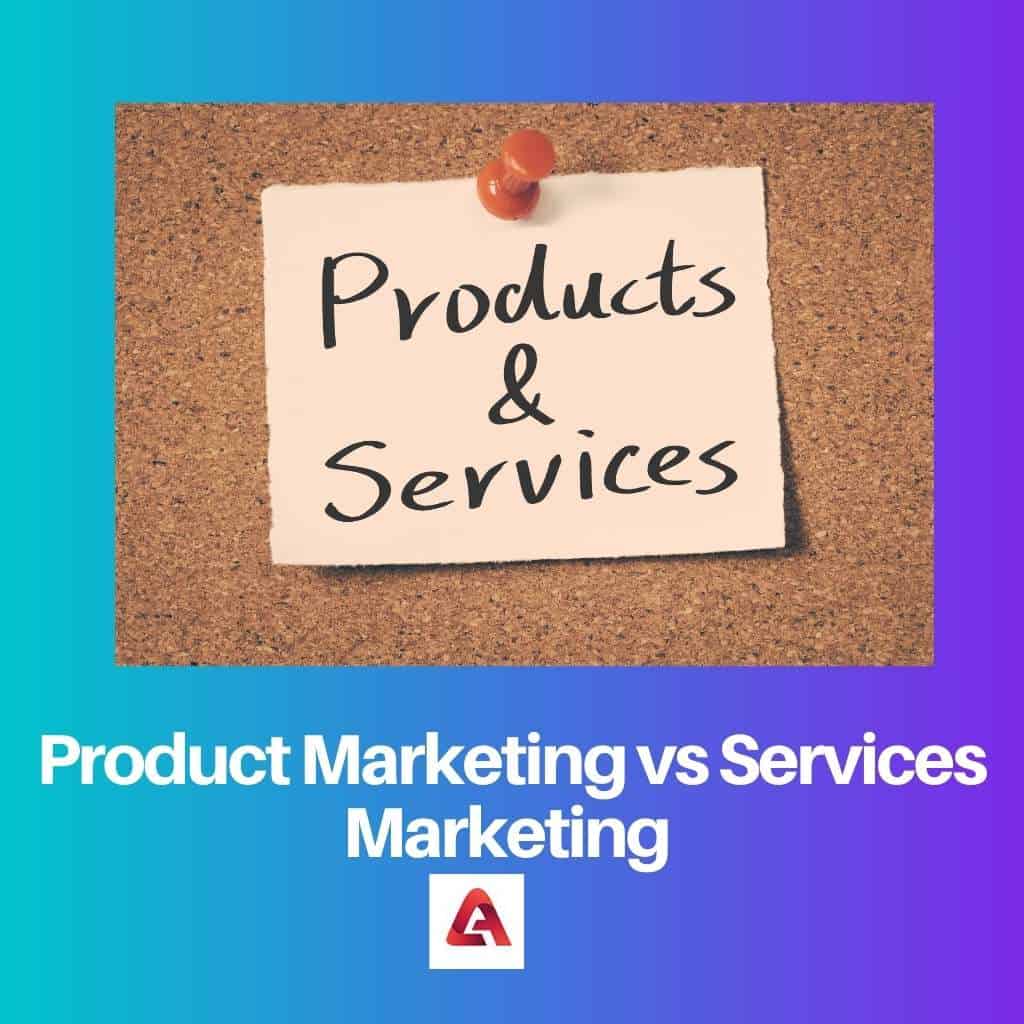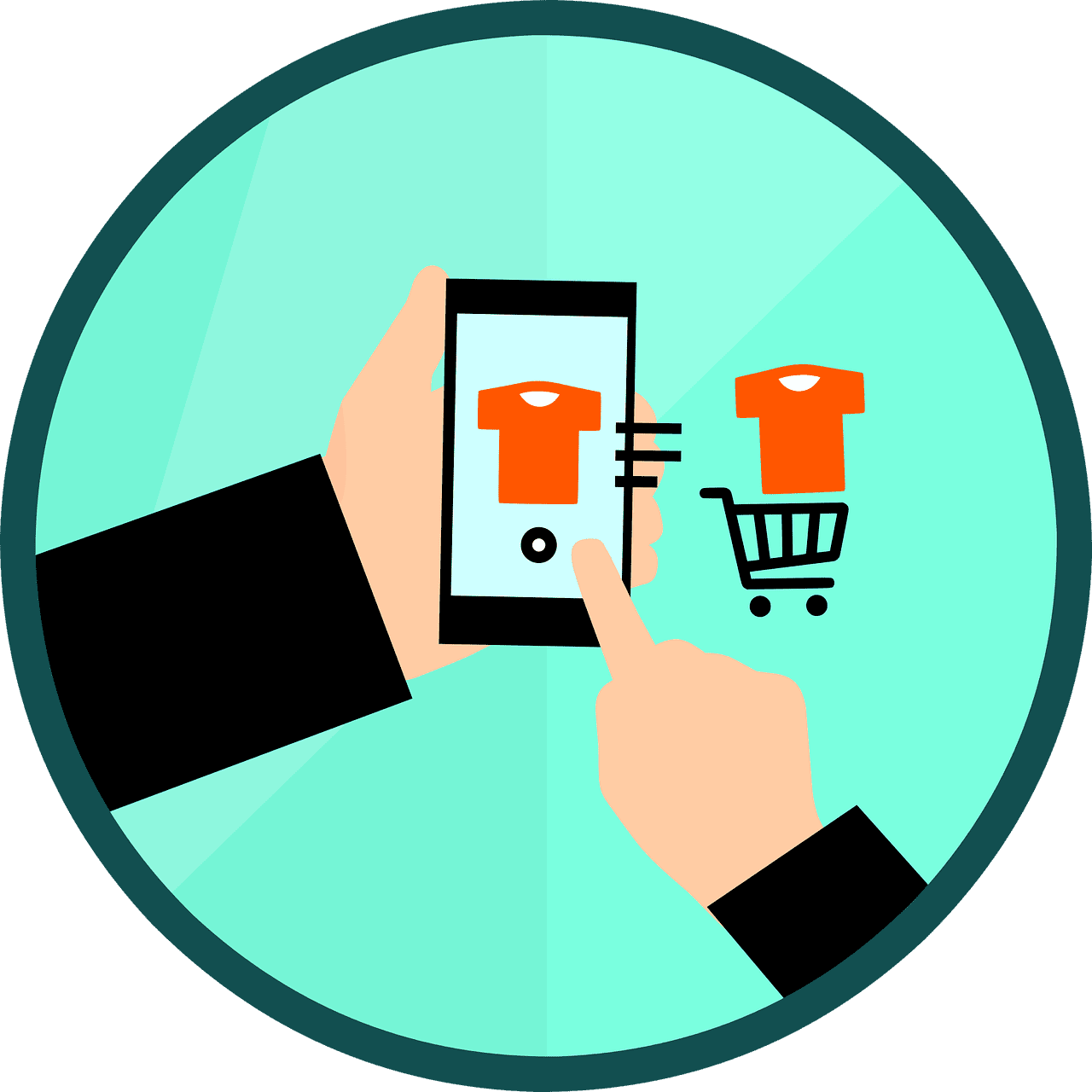There are different strategies for marketing products and services due to the differences in their characteristics. Product marketing’s purpose is to meet the requirements and demands of the target market.
As opposed to product marketing, service marketing aims to win customers’ trust by creating a good relationship. Producing or acquiring products and distributing them to customers are the two main activities of the company. Obtaining raw materials and converting them into a finished product is simple.
Key Takeaways
- Product marketing deals with tangible goods, while services marketing focuses on intangible offerings.
- Services marketing requires managing customer expectations and experiences, whereas product marketing emphasizes features, benefits, and physical attributes.
- Product marketing utilizes standardized strategies, while services marketing requires customization and personalization.
Product Marketing vs Services Marketing
The difference between Product Marketing and Services marketing is that they are both different in process and are used for various purposes. The method of aligning marketing activities with a specific product for a particular segment is called Product marketing. On the other hand, Services marketing is the process by which businesses offer economical services to potential customers in exchange for fair consideration.

The Product marketing industry involves tangible marketing products, including everything that people can see, feel or touch. Thus, this allows audiences you want to sell your product to observe and understand how tangible goods work. A product is marketed both directly to the consumer and indirectly to possible customers. Product marketing thus refers to the process of providing a product to the customer and getting their feedback, starting with a market analysis.
The act of Services marketing involves an activity being performed for someone and being compensated for it. It is impossible to define intangible services in the same manner as tangible products since they cannot be felt, tasted or odored. This is the most noticeable difference between them. In addition, marketing services are used in production and are not made available for sale. There is nothing like a repeatable service offering, even if the same person/organization provides it.
Comparison Table
| Parameters of Comparison | Product Marketing | Services Marketing |
|---|---|---|
| Transfer | Owned and resold to a third party. | Cannot be owned or resold to a third party. |
| Formula | Follows the 4P marketing formula. | Follows the 7P marketing formula. |
| Return | Can be returned as tangible products used. | Cannot be returned after they have been rendered. |
| Tangibility | Tangible products marketed. | Intangible services marketed. |
| Quality measure | The quality can be easily measured. | The quality cannot be measured. |
What is Product Marketing?
The method of aligning marketing activities with a specific product for a particular segment is called Product marketing. The Product marketing industry involves tangible marketing products, including everything that people can see, feel or touch. The process aims to find the right market for its product and placement to get a good customer response. A marketing campaign involves promoting and selling a product to prospective and existing customers.
The 4Ps of marketing can explain product marketing: product, pricing, place, and promotion. This form of marketing significantly targets customers. Accordingly, product marketing encompasses the entire process, starting with market analysis, delivering the product, and obtaining feedback from the customer. As part of this process, product marketing identifies the right markets and places the products to expedite customer satisfaction.
A product is marketed both directly to the consumer and indirectly to potential customers. Analysing the market, determining consumer demand, developing a product, pricing, pitching, advertising, positioning, distributing, selling, reviewing, and getting feedback are some of the activities involved in product marketing. Some examples of tangible marketing products include books, mobile phones, clothes, etc.

What is Services Marketing?
The act of Services marketing involves an activity being performed for someone and being compensated for it. There can be no comparison between tangible products and intangible services since intangible products cannot be felt, odored, or tasted. However, here the services can neither be owned nor resold to a third party.
A business or an organization that markets its services to its customers would be considered a service marketer. Services marketing provides answers to the concerns or hurdles customers face. Business-to-business (B2B) and business-to-customer (B2C) marketing are both included in this activity. Here, services cannot be returned as they are intangible services.
Generally, services marketing consists of the 4Ps; however, it extends beyond that by including the 7Ps. The 4Ps are the familiar marketing formula, including product, pricing, place, and promotion. Only process, people, and physical evidence are relevant to service marketing. The quality of services cannot be assessed in this form of marketing.

Main Differences Between Product Marketing and Services Marketing
- Product marketing allows the products to be easily owned and resold to a third party. On the other hand, Services marketing does not allow the services to be owned or resold to a third party.
- Product marketing allows the quality of products to be measured, whereas, in Services marketing, quality measurement does not take place.
- Product marketing will follow the common marketing 4P formula, whereas, Services marketing can extend up to the 7P marketing formula.
- Product marketing only markets tangible products, whereas, Services marketing markets only intangible products.
- Product marketing does allow the return of products. On the other hand, Services marketing does not allow the return of services.

- https://www.emerald.com/insight/content/doi/10.1108/EUM0000000001044/full/html
- https://journals.sagepub.com/doi/abs/10.1177/002224297704100219?journalCode=jmxa

This content presents the topic of product marketing and services marketing in a thorough and informative manner.
This article gives a clear understanding of what product marketing and services marketing entail. I appreciate the clear comparison.
The content offers an insightful comparison between product marketing and services marketing. It’s a valuable resource for marketers.
A well-structured and informative article on the differences between product marketing and services marketing.
I agree. The details provided in the comparison table are especially illuminating.
It’s fascinating how the marketing strategies differ for products and services. This article provides valuable insights.
An interesting read. The table is especially helpful in understanding the contrast between the two types of marketing.
The content explains in great detail the basic differences between product and services marketing.
The comparison table is particularly interesting.
The detailed comparison and thorough explanations make this article a commendable resource for understanding product and services marketing.
Absolutely, the article adequately distinguishes between product marketing and services marketing.